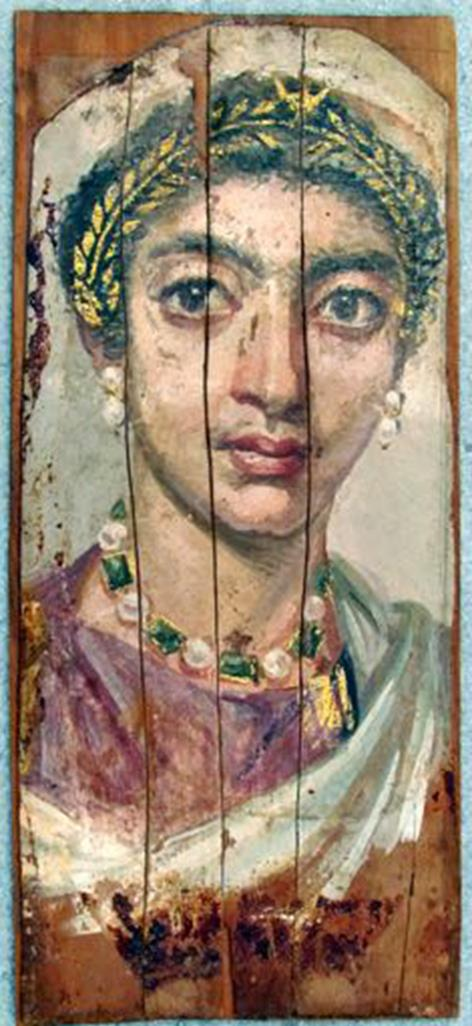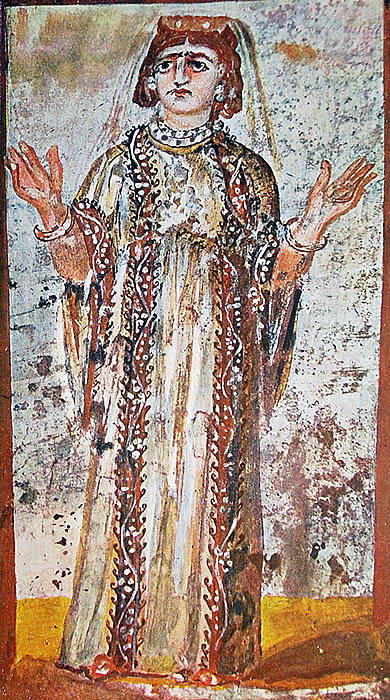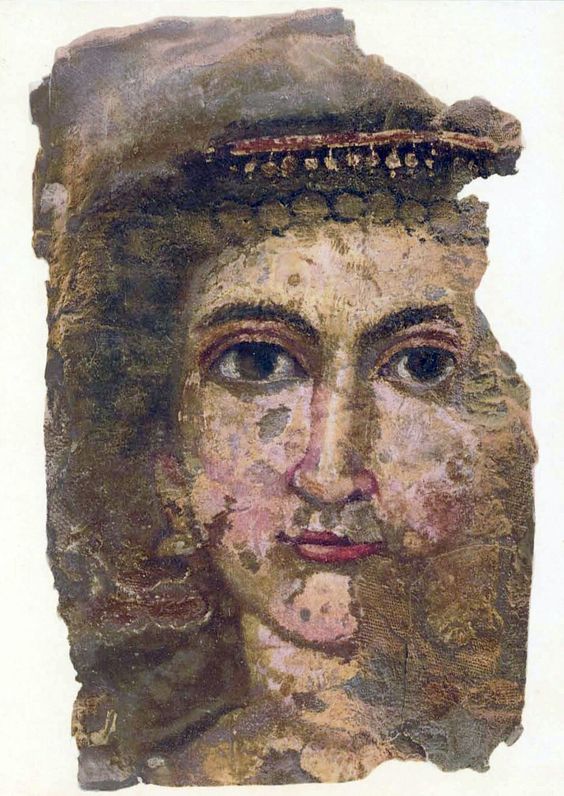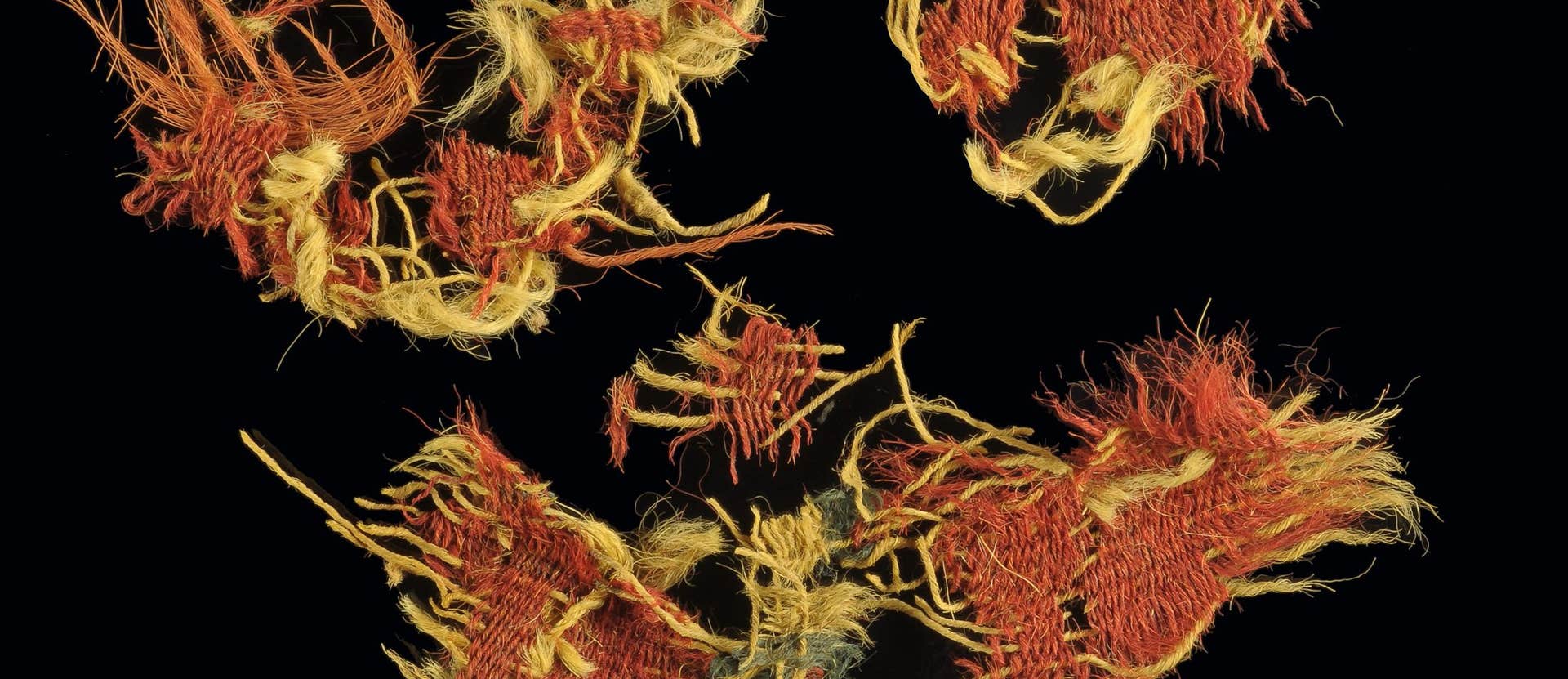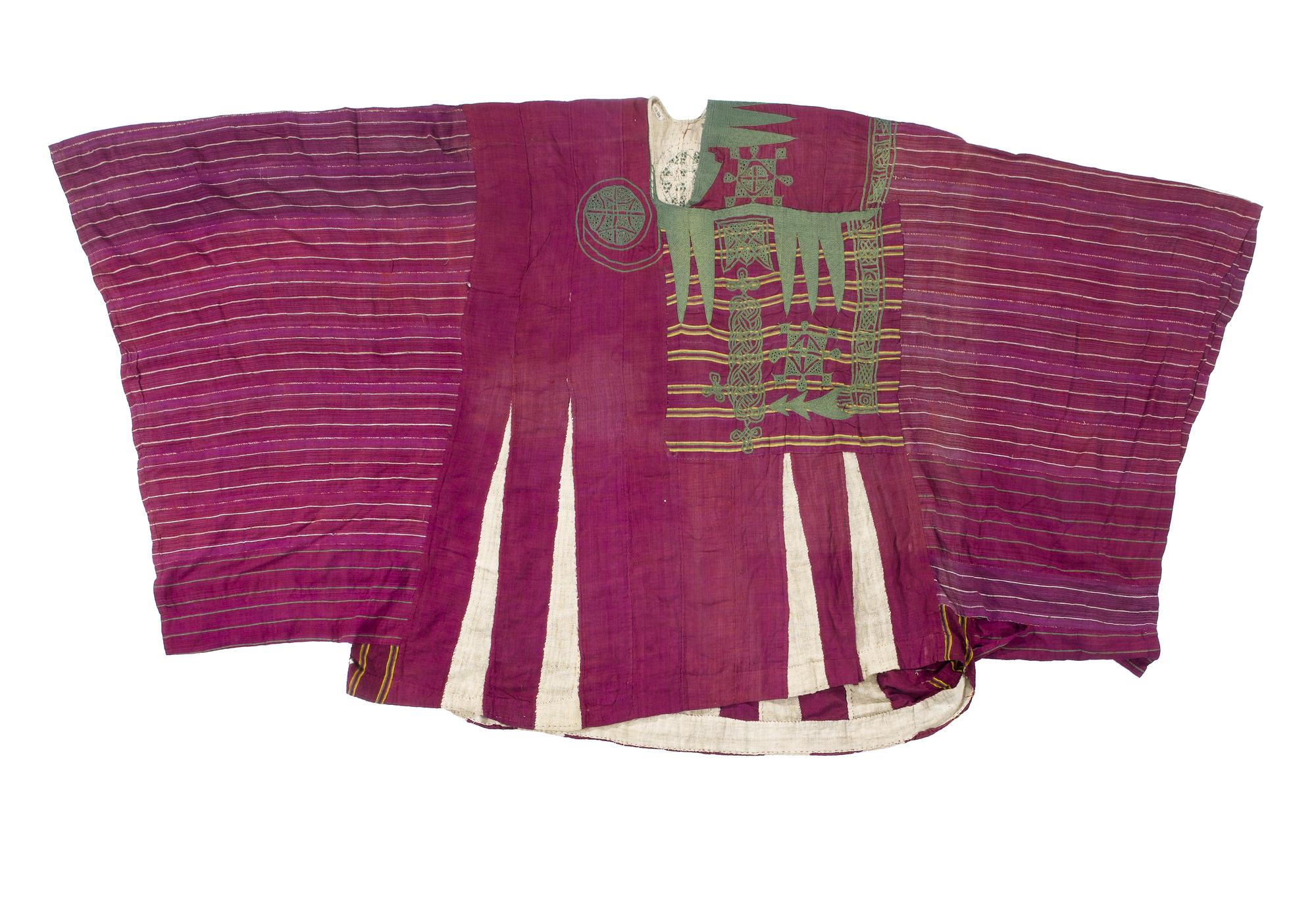While completing examples of depictions of women wearing decorative belts [http://colorsandstones.eu] I found information about a portrait from Egypt, now in the Egyptian Museum in Turin (Inv. no. S 18177), which to my surprise is described as an image of a man.
Portrait comes probably from Antinoe and is dated to the 2nd – 3rd century. It is a part of the collection of
The depicted person wears gold earrings with pearls, a torc-type necklace, and a typically female belt. I think researchers are being misled by a hairstyle that looks short, like a contemporary boy’s hairstyle. We don not really know what hairstyle this person has, because the picture is incomplete, a lot of it is missing.



Very similar portrait from 3rd century Egypt is in Moscow, in the museum of the Church of Christ Saver (Pic. 2). It depicts of a young girl in a dalmatic, wearing pearl earrings, a necklace, and a belt with a big medallion. Looks like this girl has a very short haircut.
To compare a few examples of other female portraits from that time, which there is no doubt that they represent young women (Pic. 3-5). These women have their hair pulled back tight and in a bun.



wreath, 2nd century, The Charleston Museum 32.98.46. Picture after Jordan Alexis Dopp
Pic. 4) 2nd century portrait of a woman picture from Wiki
Pic. 5) 2nd century marble statue of a Roman girl. She has hair divided in the center and fastened in a loop behind her neck. Cairo Museum
- Egyptian Museum in Turin Inv. no. S 18177 https://collezioni.museoegizio.it
Nicola, Gian Luigi (a cura di), De gypso et coloribus: atti dei corsi estivi dell’Accademia Albertina (Aramengo d’Asti, 2001 e 2002), Torino 2002, pp. 206-7
Parlasca, Klaus, Repertorio d’arte dell’Egitto Greco-Romano: Serie B: Vol II, Roma 1977, pp. 86-87 - I RITRATTI DI MUMMIA DEL PERIODO GRECO-ROMANO DA ANTINOUPOLIS Alessandra Vinciguerra
Rivista degli studi orientali. Nuova Serie, Vol. 85, Fasc. 1/4 (2012), pp. 553-581 https://www.jstor.org
- Repertorio d’arte dell’Egitto greco-romano. Serie B; 2003; Achille Adriani, Klaus Parlasca, Hans G. Frenz
- Погребальная пелена из Музея Храма Христа Спасителя в Москве, Фридманн Аполлинария Михайловна an article
“Погребальная пелена из Музея Храма Христа Спасителя в Москве представляет собой поясное изображение девочки в двухцветной далматике с символом анх в правой руке. Пелена принадлежат так называемому антинопольскому типу, датируемому серединой — концом III вв. н.э. Известно более 20 подобных пелен, большая часть которых была найдена при раскопках некрополя Антинополя в 1896-1911 гг. Предварительное изучение свидетельствует о том, что московская пелена была изготовлена в Антинополе во второй половине III в. н.э.” - Mummy portraits: Investigating regional variations, Maryan Ragheb Sobhy Ragheb American University in Cairo
- Jordan Alexis Dopp RECONTEXTUALIZING THE CHARLESTON MUMMY PORTRAIT an article


